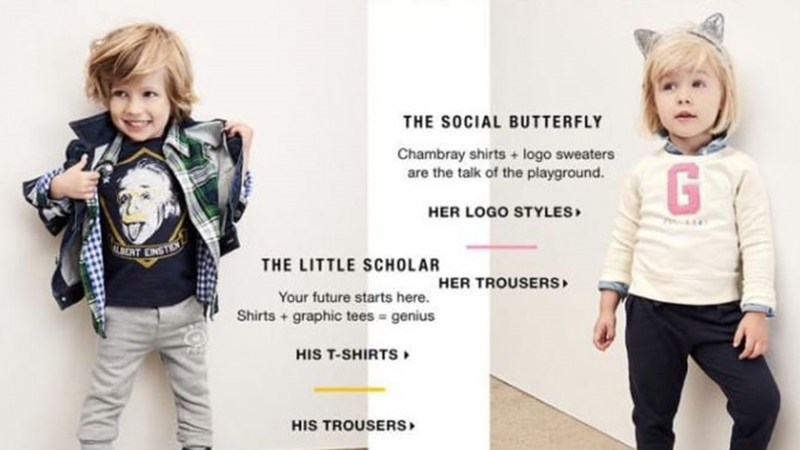Last August popular clothing brand Gap came under criticism for enforcing regressive gender stereotypes through its advertisements. The ad showed a boy wearing a shirt with picture of Einstein with the caption “the little scholar” and a girl wearing a jersey with caption “the social butterfly”. The adverts were later taken down.

Advertising gender-specific products is quite common. Most commonly it is being done through use of colours. For instance advertising the same product, like toothbrush or pen (the Bic pen was hilariously trolled for making a special pen for women) in pink or pastels for women. Often these are differently (mostly higher priced) than the versions for men.

Advertisements not just perpetuate harmful stereotypes like promoting toy guns for boys and tea sets for women but also target products based on what society deems as men’s vs women’s work. Products like detergents and dish washing liquid mostly show women as users, implying that laundry and dish washing is a woman’s job.



On the other hand, advertisements for banking, insurance and finance or cars or are directed at men, marking these as male domains. Other ads directed at men (like alcohol ads which advertise proxies such as soda water or music CDs) for instance Imperial Blue ‘men will be men’ campaign promote humour in the name of regressive sexism and show men either ogling at women or being henpecked by their wives.
Apart from regressive ideas of gender roles perpetuated by these ads, the advertisement industry has faced constant backlash against the sexist content that it continues to churn out. This has included ads of fairness creams that guarantee success on basis of complexion, a vagina tightening cream or vagina fairness cream for pleasing one’s husband, women with multiple hands that are catering to family’s varied demands for food, women doing all the household chores to be ultimately cajoled with muscle relaxant creams, cereal ads especially for women promoting weight loss, and cooking oil ads for pleasing one’s in laws.


Brands can do better. In fact many are moving towards progressive and refreshing ideas. Some interesting examples of these are Anouk’s ad (a clothing brand) featuring lesbian couple. Another example is Ariel’s ‘share the load’ pitch that encourages men to recognize how household has been mostly shouldered by women and its time they pitch in as well. Titan Raga ‘break the bias’ ad looks at how society looks at women’s achievement.


However, making ads feminist is a delicate balancing ad. Often the intent behind some new ideas is either never fully realized or gets completely reduced to public relations exercise or a marketing gimmick. Some examples of these are Dove’s body positivity campaign while lauded for using ‘real’ women (instead of models) and widening the definition of beauty, was criticized for being manipulative and infantilizing. Closer home, All Out’s ‘stand by her’ ad where a mother punishes her son, is chastised by mother in law and husband, and ultimately rescued by grand old family patriarch, while not saying a word, failed miserably to get its message across.


Feminist advertising has time and again come under fire either for their patronizing and tone deaf campaigns or failing to live up to their feminist ideas in practice. In India where women in ads are either portrayed as efficient homemaker (thanks to the use of the product) or as sexualized props to sell bikes or deodorants, efforts by brands must be encouraged. Advertisements are made to influence, and are consumed subconsciously by a large population including impressionable children. Brands can see ads as an excellent opportunity to not just get their product noticed but also change conversations around gender roles, patriarchy and feminism.
(This is an opinion piece and the views expressed above are the author’s own. Newsd neither endorses nor is responsible for the same.)


















